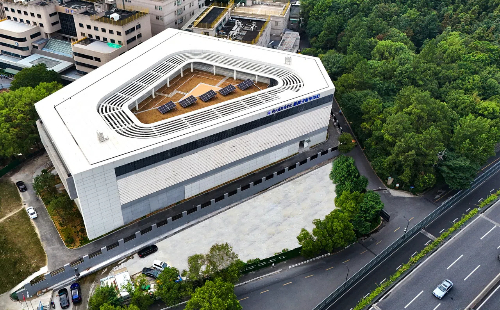Nation's rail network continued to break records in 2024
Expansion milestones
On a crisp September morning during China's Mid-Autumn Festival, Luo Wei and her family stood at Chengdu East Railway Station, excited but unsure. They were embarking on a last-minute trip to Jiuzhaigou, a picturesque UNESCO World Heritage Site nestled in the mountains of western Sichuan province. In the past, such a journey would have been an exhausting multi-day ordeal. The eight-hour road trip from Chengdu to Jiuzhaigou is notorious for its winding roads through the mountains and steep drop-offs below. But this time, they were about to board a new train service that would transform the experience.
In 1 hour and 39 minutes, they reached their destination, smoothly gliding through the mountains aboard a cutting-edge bullet train. Although a two-hour bus ride linking the railway station and the scenic area still awaits, it was much better than the previous eight-hour journey from Chengdu. No more hours spent cramped in a car on winding roads. It was a glimpse into the future of transportation in China, where high-speed rail has turned what once felt like an impossible journey into a comfortable, efficient reality.
"We thought it might be different to see Jiuzhaigou by train, especially with our 10-year-old son," Luo said, reminiscing about the challenging, fun-filled backpacking and self-driving trips she and her husband had taken several times during their school years.
"It (the train journey) was certainly easier, and the trip was far more comfortable — much more suitable for a family outing, especially with a child," she said.
"Before, a round trip to Jiuzhaigou would take at least three days. Now we can do it in just a day."
The 69-km newly opened railway from Zhengjiangguan to Huangshengguan links this remote yet breathtaking region to China's extensive railway network for the first time.
Over a century ago, Sun Yat-sen, a pioneering Chinese revolutionary leader, envisioned a modernized China in his book The International Development of China. His plan included the construction of 1.6 million km of roads and approximately 160,000 km of railways. Last year, while Sun's vision for railways became a reality, the development of China's high-speed rail has in all likelihood exceeded his expectations.
Passengers exit a busy bullet train at Nanjing Railway Station on Oct 7. SU YANG/FOR CHINA DAILY
Last year, more than 3,100 km of new rail was built, including 2,457 km of high-speed rail, linking key cities and regions.
Since 2012, the total length of China's rail network has grown by more than 65 percent, while high-speed rail has expanded over fourfold.
Compared to 2012, when China's total railway length was 98,000 km with 9,356 km of high-speed rail, the country's rail infrastructure has undergone an impressive transformation.
Li Jingwei, deputy head of the development and reform department of China State Railway Group, highlighted the accelerated pace of construction.
"Since 2012, the expansion of China's high-speed rail has intensified, with an average of over 3,000 km of new high-speed rail lines put into operation annually," Li said.
Notably, China is the only country to achieve commercial operation of high-speed rail at 350 km/h, showcasing technological prowess, he said.
"From snowy forests in the northern part of China to the water towns in the eastern region, and from the desert to the sea, China's high-speed rail traverses major rivers and rugged mountains, and connects all regions," Li said.
He added that the high-speed railway network covers more than 96 percent of cities with populations over 500,000, including the Hong Kong Special Administrative Region.
By 2030, China aims to have built a world-class modern railway network covering about 180,000 km, including around 60,000 km of high-speed rail. This expansion will create a more efficient and interconnected transportation system, allowing passengers to travel between major cities in just one to three hours and ensuring the swift movement of cargo across the country.
The expansion of the network has not only reduced travel times but also increased connectivity between major cities and more isolated areas, including regions with challenging terrain, where building roads is already difficult, let alone railways. This is particularly true in the rugged mountains of Sichuan and the Xizang autonomous region, where new rail lines have brought services to remote locations, boosting regional development and tourism.





 play
play